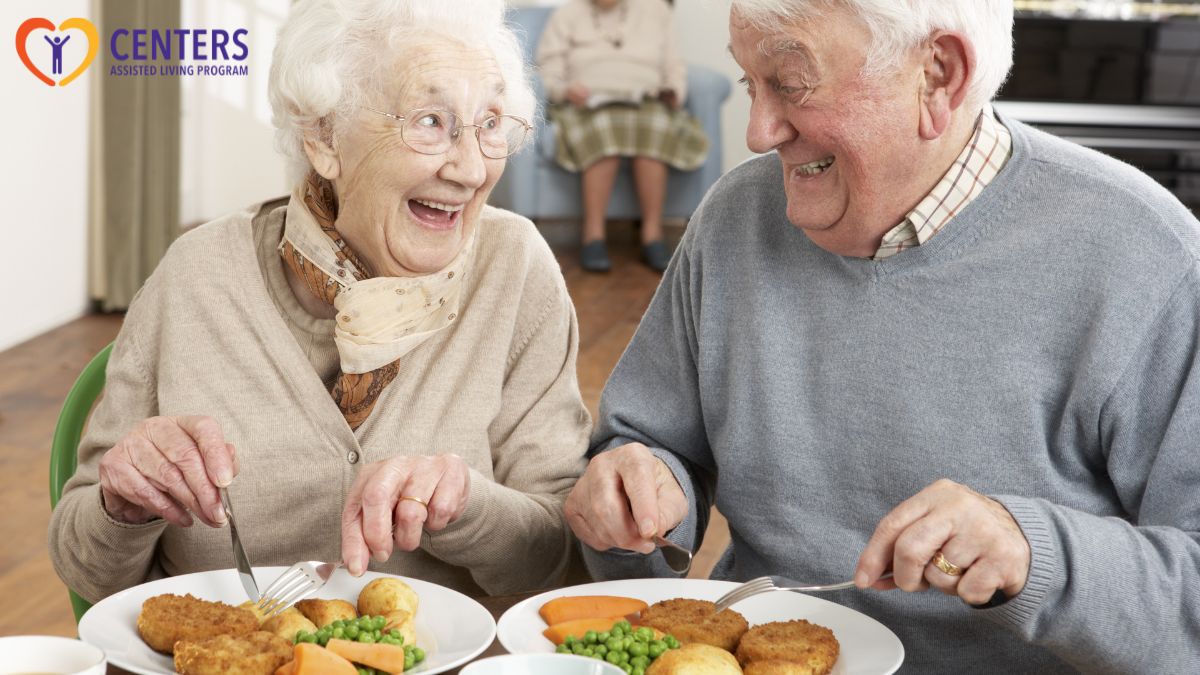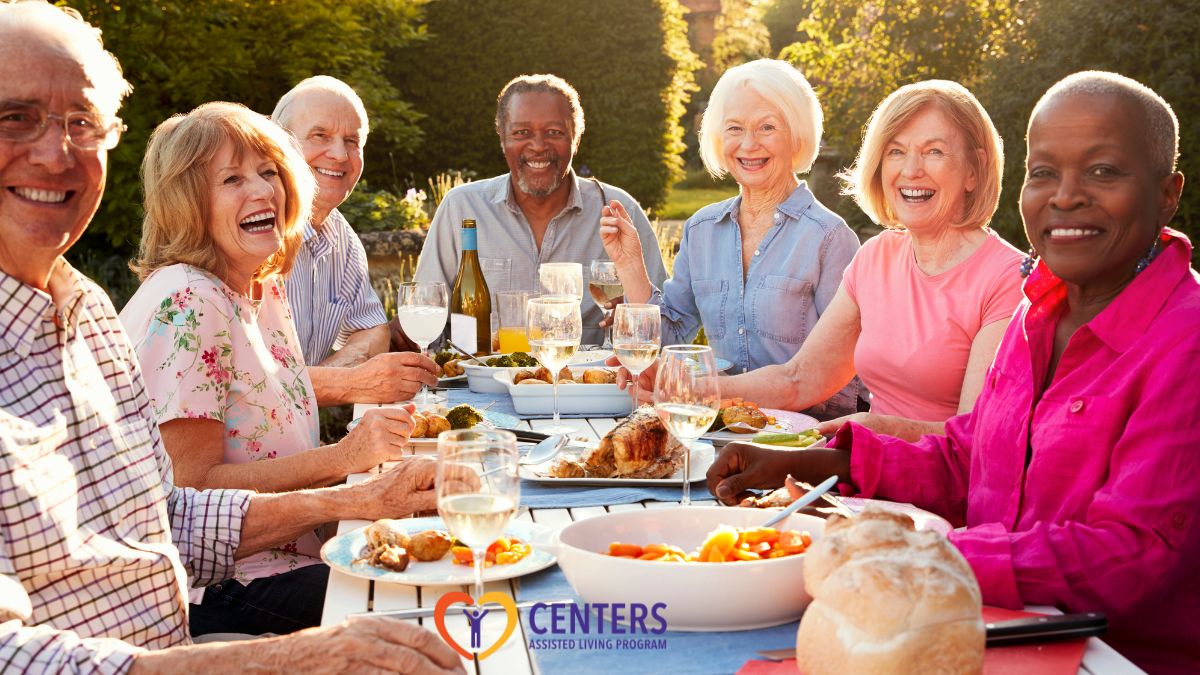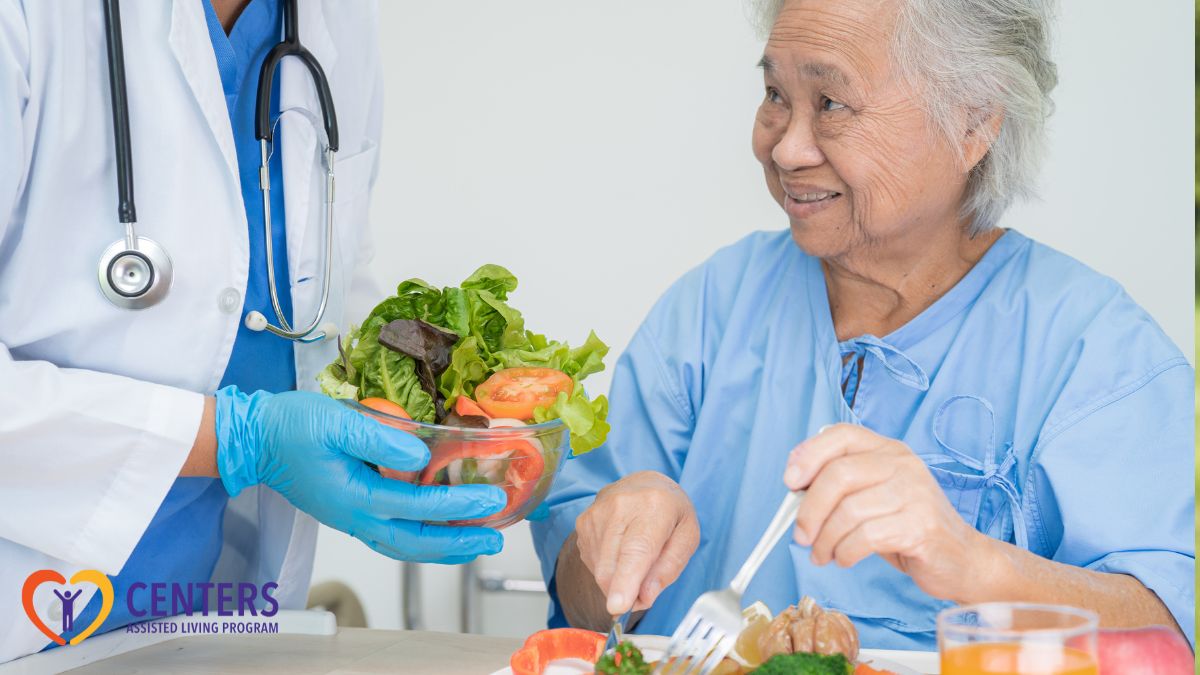Healthy eating in later years means balance. Protein, fiber, calcium, vitamin D, and B12 aid muscle and recovery. Mediterranean or DASH guide heart health, MyPlate shapes daily meals, assisted living adapts with soft foods and nutrition drinks for seniors, while senior nutrition tips stress planning, safe pairings, and weight checks.
Why does eating well seem harder as the years go by? Nutrition for seniors plays a major role in how the body stays strong, mobile, and resilient against illness. What follows highlights practical approaches that show how daily food choices shape better health for older adults.
Senior Health Nutrition: Muscle, Mobility, Recovery
You know how staying active feels harder when muscles weaken? The right food choices can change that. Good nutrition for seniors supports strength, mobility, and recovery after illness or long rest.
Protein at Every Meal
Muscle needs rise with age. A helpful goal for many older adults is 1.0–1.2 g of protein per kilogram of body weight per day. Spread it across meals so each plate includes:
- Eggs or yogurt at breakfast
- Fish or poultry at lunch
- Beans, lentils, or tofu at dinner
Research shows 25–30 g of protein per meal helps build and repair muscle. Pair it with resistance exercises when possible. The mix of movement and protein supports daily function and recovery.
Fiber, Calcium, Vitamin D, B12 First
Here’s a tip: balance matters as much as protein. Focus on these essentials:
- Fiber – 30 g/day for men, 21 g/day for women, from beans, fruits, veggies, and whole grains
- Calcium – 1,200 mg/day for women 51+ and men 71+
- Vitamin D – 600–800 IU/day depending on age
- Vitamin B12 – 2.4 micrograms/day, often through fortified foods since absorption drops with age
Food should be the first source. Supplements help only when intake falls short, ideally after a clinician’s review. You might notice that some fortified foods and nutrition drinks for seniors make it easier to meet these daily needs.
Nutrition for Seniors: Daily Plate Patterns That Work
Good nutrition for seniors often starts with two proven approaches. For example, both the Mediterranean and DASH diets are backed by strong research for heart and metabolic health. Either option makes a strong diet for seniors.
The Mediterranean diet focuses on olive oil, nuts, fish, legumes, whole grains, and plenty of vegetables. A major trial in older adults at high risk showed it reduced cardiovascular events.
Meanwhile, DASH centers on vegetables, fruits, lean proteins, whole grains, and low-fat dairy or fortified soy. It lowers blood pressure within weeks.
MyPlate Made Simple: Half Produce, Lean Protein, Whole Grains
You might notice eating well becomes easier when the plate itself is your guide. Try this pattern:
- Half fruits and vegetables
- One-quarter lean protein
- One-quarter whole grains
- Plus dairy or fortified soy if tolerated
Free USDA tools help plan meals that follow this plate without straining the budget.
 Diet for Seniors in Assisted Living: Meals, Snacks, Hydration
Diet for Seniors in Assisted Living: Meals, Snacks, Hydration
But let’s be real, mealtimes are more than food. They’re comfort, safety, and connection. Good nutrition for seniors in assisted living balances taste, dietary needs, and health challenges that come with age.
Chef-Prepared Choices and Soft Textures
Many dining programs offer balanced menus tailored to individual needs. For older adults with chewing or swallowing difficulties, texture-modified meals make eating safer and more enjoyable.
Some practical soft protein choices include:
- Flaky fish
- Tender legumes
- Yogurt
- Slow-cooked meats
These textures support safety while keeping meals satisfying. It’s one way the best diet for old people remains both nourishing and enjoyable.
Nutrition Drinks for Seniors: Use During Low Appetite
Appetite naturally dips for some, especially during illness or recovery. Oral nutrition supplements can fill short-term gaps. Studies show they raise energy intake and may help improve weight or BMI when combined with snacks and fortified meals.
They’re best used as add-ons, not replacements. Blending supplements with regular snacks helps keep a balanced diet for seniors without overwhelming the appetite.
Medication and Food: Smart Pairings, Safer Meals
You might notice how certain foods and medicines don’t always mix well. Paying attention to these pairings is part of the best diet for old people, since it helps meals support health instead of interfering with treatment.
Grapefruit and Statins, Vitamin K and Warfarin
Some food–drug interactions are more common than many realize.
- Grapefruit and statins – Grapefruit can raise blood levels of drugs like simvastatin, raising side-effect risk. Always confirm if your prescription is affected.
- Vitamin K and warfarin – Consistency is key. Instead of avoiding leafy greens, keep vitamin K intake steady to maintain INR control.
Metformin and B12: Ask for Periodic Checks
Long-term metformin use may lower vitamin B12 levels. Low B12 can contribute to fatigue, memory changes, numbness, or tingling. Talking with a clinician about adding B12 checks to routine labs is one of the most practical senior nutrition tips for those taking metformin.
 Senior Nutrition Tips: Simple Wins You Can Use
Senior Nutrition Tips: Simple Wins You Can Use
It has become easier to keep healthy eating on track when small changes are part of the routine. These senior nutrition tips focus on simple wins that make meals nourishing, affordable, and easier to manage day after day.
A weekly plan reduces decision fatigue and keeps nutrients consistent. You can try:
- Repeating balanced dinners that follow MyPlate
- Rotating produce by season to save money
- Using frozen fruits, vegetables, and low-sodium canned beans for convenience
- Adding whole-grain swaps like oats or pasta for fiber
- Keeping favorite comfort meals but upgrading with extra vegetables or protein-rich add-ins like yogurt or beans
Watch Weight Trends, Note Appetite Changes
Small changes can signal big concerns. Losing more than 5% of body weight in 6 months, or more than 10% over longer periods, suggests malnutrition risk. Tracking weight weekly at the same time of day helps.
Sometimes adding fortified snacks or nutrition drinks for seniors is the easiest way to keep energy up during low appetite phases.
Frequently Asked Questions
What is the best nutrition for elderly people?
The best nutrition for elderly people emphasizes vegetables, fruits, legumes, nuts, whole grains, lean proteins, and dairy or fortified soy, with healthy oils. This mix supplies protein, fiber, calcium, vitamin D, potassium, and B12. Mediterranean and DASH diets support heart and metabolic health effectively.
What is the number one fruit that seniors should eat every day?
The number one fruit seniors should eat every day does not exist, as variety ensures full nutrient coverage. Berries, citrus, apples, and pears supply fiber and flavonoids, while bananas and melons add potassium and hydration. Seniors should aim for 1 1/2–2 cups of fruit daily within a balanced diet.
What is the best nutritional drink for elderly people?
The best nutritional drink for elderly people depends on need. Milk or fortified soy beverages give protein, calcium, and vitamin D for daily nourishment. Oral nutrition shakes help during low appetite or recovery. Hydration starts with water and low-sugar fluids, especially important during hot weather.
Support Better Health with the Right Nutrition
Understanding how food affects muscle, energy, recovery, and even medication safety is an important step toward healthier aging. Good nutrition for seniors in New York can help older adults stay strong, safe, and connected.
At Centers Assisted Living, we provide meal options, guidance, and support that make healthy eating easier to maintain. Contact us today if you want to make nutrition a stronger part of seniors’ daily care.


